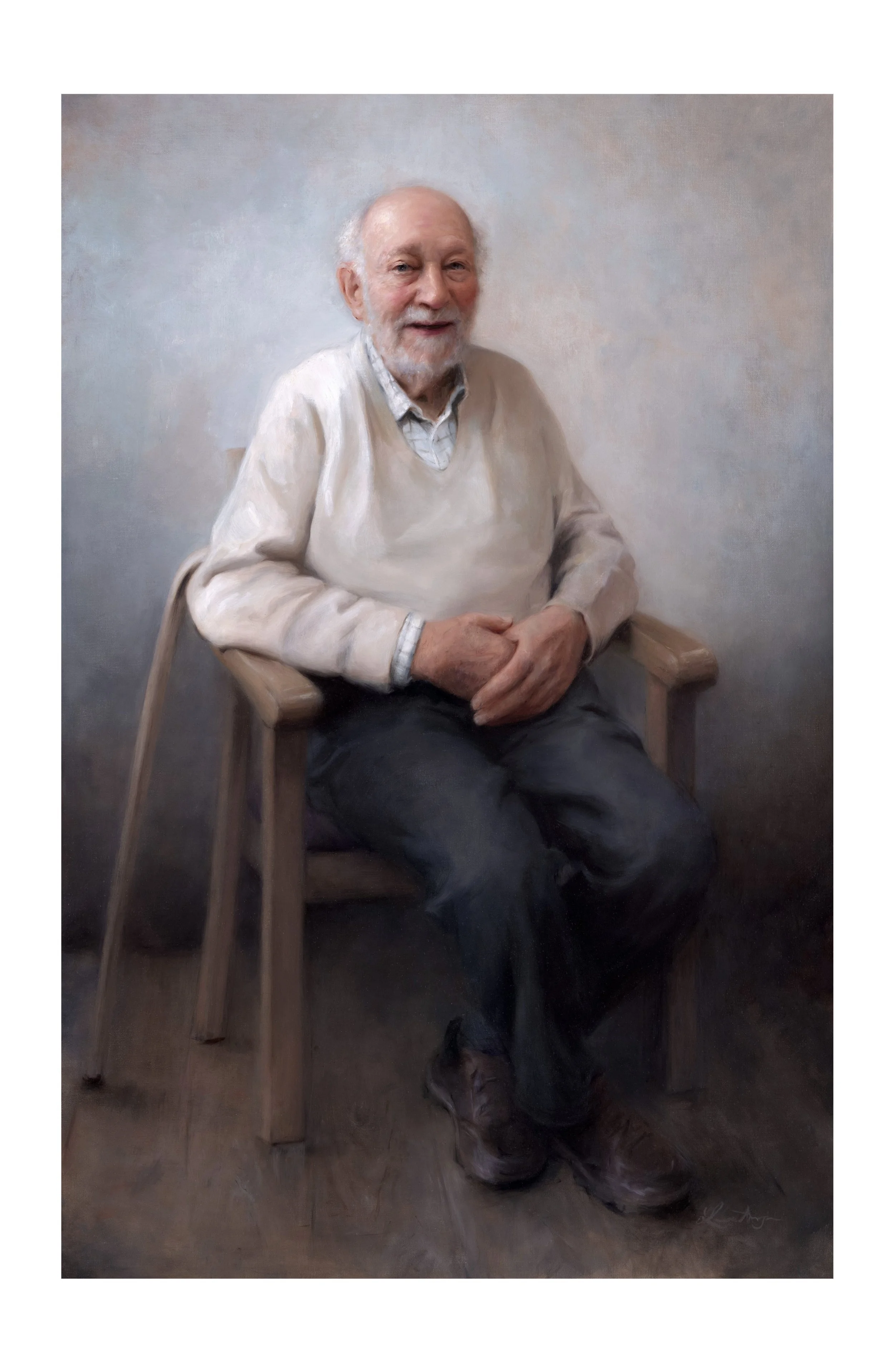I would visit Kurt at the Holocaust Survivors Centre in North London, a centre offering social, recreational and cultural activities for Holocaust survivors, refugees and their families. On each occasion, I would immediately be met with warm smiles from the survivors and a sense that I had arrived at a very special place. Kurt, aged 99, still living independently, would drive himself to the Centre. Anyone who meets Kurt is touched by his gentle nature, intelligence, and cheeky senses of humour. Whilst I would paint, Kurt would tell me about his life.
Kurt Marx was born in August 1925 in Cologne. After the violent attacks on Jews during the Kristallnacht Pogrom in November 1938, Kurt’s headteacher, Erich Klibansky, started organising for Jewish children to go on a train to England. Kurt remembers saying goodbye to his family in the belief that they would soon meet in England when his parents got the necessary documentation. The Kindertransport (German for "children's transport") was a rescue operation that brought more than 10,000 Jewish children from Nazi-controlled territories to safety during the nine months prior to the outbreak of the Second World War. The United Kingdom took in nearly 10,000 children, from Germany, Austria, Czechoslovakia, and Poland. The programme was supported by the British government, which waived the visa immigration requirements where necessary.
Kurt arrived in England on 18th January 1939 and stayed at a hostel in Willesden, London. When war broke out in 1939 Kurt was evacuated from London to Bedford where he helped with the war effort on a farm in Buckinghamshire. After the war ended, he started to working in the jewellery trade in Hatton Garden. He met his wife, Ingrid, a survivor of Auschwitz and they married in 1948.
After the war Kurt tried to find out what had happened to his parents. In the last letter he ever received from them they had talked about their impending departure to an unknown destination in July 1942. Many years later he found out that they had been deported to the Minsk Ghetto and shortly after murdered in a concentration camp near the Maly Trostenec forests (now Belarus), along with an estimated 65,000 other Jews. Kurt is the only survivor of his immediate family.
This painting was selected for the Figurativas 2025, Museu Europeu D’Art Modern, Barcelona.
